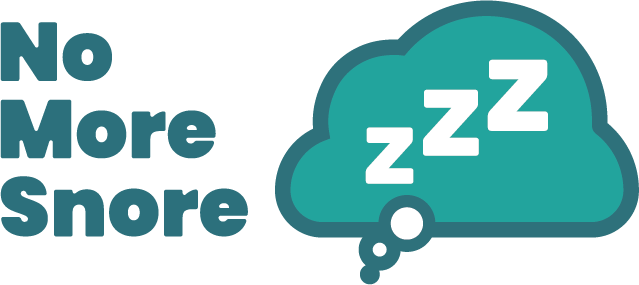Sleep apnea is a common sleep disorder that affects millions of people worldwide. It is characterized by repetitive pauses in breathing or shallow breaths during sleep, leading to disrupted sleep patterns and potential health complications. Sleep apnea can be classified into several types, with the most prevalent ones being obstructive sleep apnea (OSA), central sleep apnea (CSA), and complex sleep apnea syndrome (CompSAS). In this blog, we will delve into each of these types, exploring their causes, symptoms, risk factors, and available treatment options.
Obstructive Sleep Apnea (OSA):
Obstructive sleep apnea is the most common form of sleep apnea, accounting for approximately 84% of cases. It occurs when the muscles in the throat relax, leading to the partial or complete blockage of the airway during sleep. The obstruction can cause loud snoring, gasping, or choking sounds as the individual struggles to breathe. Risk factors for OSA include obesity, age (40 and above), male gender, a family history of sleep apnea, smoking, and anatomical abnormalities such as a deviated septum or enlarged tonsils.
People with OSA may experience the following:
- excessive daytime sleepiness
- morning headaches
- irritability
- difficulty concentrating
- decreased libido
If left untreated, OSA can increase the risk of high blood pressure, heart disease, stroke, and other serious health conditions. Continuous Positive Airway Pressure (CPAP) therapy, which involves wearing a mask over the nose or mouth during sleep to deliver a steady flow of air pressure, is the most common and effective treatment for OSA. Other treatment options include oral appliances that reposition the jaw and tongue, lifestyle changes like weight loss and avoiding alcohol and sedatives, and in some cases, surgery to remove obstructions.
Central Sleep Apnea (CSA):
Central sleep apnea is less common than OSA and is characterized by the brain’s failure to send proper signals to the muscles responsible for controlling breathing. Unlike OSA, there is no physical obstruction in the airway. CSA often results from underlying medical conditions such as heart failure, stroke, brainstem lesions, or certain neurological disorders. It can also occur as a side effect of certain medications or high-altitude exposure.
The symptoms of CSA may include:
- abrupt awakenings accompanied by shortness of breath
- difficulty staying asleep
- poor sleep quality
- frequent awakenings throughout the night
Treatment for CSA typically focuses on addressing the underlying medical condition and may involve medications, supplemental oxygen, or adaptive servo-ventilation (ASV) therapy. ASV therapy is a specialized form of positive airway pressure therapy that delivers different levels of pressure based on the individual’s breathing patterns, helping to stabilize and support breathing during sleep.
Complex Sleep Apnea Syndrome (CompSAS):
Complex sleep apnea syndrome, also known as treatment-emergent central sleep apnea, is a relatively rare condition that combines features of both obstructive and central sleep apnea. It occurs when a person initially has OSA but develops central sleep apnea after receiving treatment with positive airway pressure therapy, such as CPAP. The exact mechanisms underlying CompSAS are not fully understood, but it is believed to result from a complex interplay between the airway, breathing control centers in the brain, and the body’s response to treatment. The symptoms and risk factors for CompSAS are similar to those of OSA and CSA. Treatment options for CompSAS may involve adjusting the settings on the positive airway pressure device, trying different types of therapy, or combining therapies to address both the obstructive and central components.
Diagnostic Process for Identifying Types of Sleep Apnea
Diagnosing the different types of sleep apnea involves a comprehensive evaluation that typically requires the involvement of a sleep specialist or a healthcare professional with expertise in sleep medicine. The diagnostic process may involve the following steps:
Medical History and Physical Examination
The healthcare professional will start by taking a detailed medical history, including symptoms, sleep patterns, and any underlying medical conditions. They will also perform a physical examination to check for physical signs related to sleep apnea, such as enlarged tonsils or a narrowed airway.
Sleep Study (Polysomnography)
A sleep study is the primary diagnostic tool for sleep apnea. It is conducted either in a sleep laboratory (in-lab sleep study) or at home (home sleep study). During the sleep study, various physiological parameters are monitored while you sleep, including brain activity, eye movement, muscle activity, heart rate, airflow, and oxygen levels. This data helps in identifying the type, frequency, and severity of apnea events and differentiating between obstructive and central sleep apnea.
Monitoring of Breathing Patterns
The sleep study will specifically monitor your breathing patterns, including the presence of apneas (complete cessation of breathing) and hypopneas (shallow or partially blocked breathing). This information helps determine if the apneas are primarily obstructive or central in nature.
Additional Tests
In some cases, additional tests may be necessary to further evaluate the underlying causes or complications associated with sleep apnea. These tests may include imaging studies such as X-rays, CT scans, or MRI scans to assess the airway and identify any structural abnormalities.
Evaluation of Treatment Response (in the case of CompSAS)
For individuals suspected of having complex sleep apnea syndrome (CompSAS), the diagnosis is often made based on the presence of both obstructive and central apneas during the sleep study and the emergence of central apneas with positive airway pressure therapy. Treatment response evaluation may involve adjusting the settings on the positive airway pressure device or trying different therapeutic approaches to address both obstructive and central components.
Understanding the different types of sleep apnea, including obstructive sleep apnea, central sleep apnea, and complex sleep apnea syndrome, is crucial for proper diagnosis and effective treatment. It is important to note that the diagnostic process may vary depending on individual circumstances and the healthcare provider’s preferences. Therefore, it is crucial to consult with a healthcare professional specializing in sleep medicine to determine the most appropriate diagnostic approach for your specific situation. If you suspect you or a loved one may have sleep apnea, it is important to consult with a healthcare professional who can guide you through the diagnostic process and recommend appropriate treatment options. Remember, with proper management, sleep apnea can be effectively controlled, leading to improved sleep and overall well-being.

